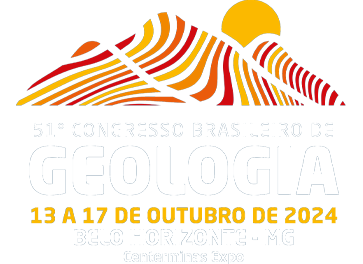Dados da Submissão
Título
BIOEROSION IN RELICT, UNBURIED SHELLS: TAPHONOMIC IMPLICATIONS AND RELEVANCE TO COQUINA DEPOSITS
Texto do resumo
The biological agents of postmortem destruction depend on factors such as water energy and temperature, light exposure, and suspended matter concentration, which are nonlinearly distributed across aquatic habitats. If different environments lead to particular taphonomic routes, screening shelly remains still exposed to known conditions allows reliable taphofacies quantification. This is also true for microendolithic traces (microscopical bioerosion produced by cyanobacteria, algae, and heterotrophs on carbonate substrates, such as shells). Those biogenic traces can be related to specific agents, with known ecological preferences. We focused on quantifying microendolithic damage present in mollusk and brachiopod shells recovered from the Southern Brazilian Shelf. 13 shell-rich samples were selected, collected from evenly distributed locations between parallel 27°S and parallel 34°S. Samples were obtained using Van Veen grab dredge and Box-Corer samples during several GEOMAR (1975 to 1984) and REVIZEE (1999) oceanographic expeditions. The bathymetric range of the samples varies from 12 to 200 m. The microendolithic damage present in shells were identified based on specialized literature and evaluated together with salinity, temperature, current velocity, and sedimentological information obtained from the same locations of the samples. A total of 2800 bioclasts were analyzed, and 32 types of bioerosion traces were recognized. Several traces occur in a single locality, and most bioerosion traces had a very low frequency in each sample. The most frequent traces are produced by cyanobacteria (Phormidium sp. and Scolesia isp.), fungi (Saccomorpha isp.), sponges (Entobia isp.) and bryozoan (Iramena isp.). Less frequent traces are mainly produced by heterotrophs (Orthogonum isp., Gastrochaenolites isp., Gnatichnus pentax and Caulostrepsis taeniola). Using Canonical Analysis of Proximity (CAP), with Manhattan index, we detected that more than 85 % of variation present in the biological damage from the shells are related to the oceanographic and sedimentological features from the area. Most variation is contained in the first axis (42%), so the main variables that influence this damage are latitude, longitude, depth, and gravelly sediments. Traces produced by fungi (Orthogonum lineare and Sarcomorpha isp.) appear to be preferentially controlled by latitude and longitude. Traces caused by other heterotrophs (Pinnaceocladichnus isp., Iramena isp., Pennatichnus luceni, and Entobia isp.) show more correlation with sand and gravel substrates. Damages induced by cyanobacteria (Scolesia filosa e Fasciculus isp.) are more dependent on depth of the sample, whereas traces produced by Phormidium sp. (also a cyanobacteria) is related more closely to carbonate content of the substrate. However, this trace was also found in other samples, including those at high depths, far below the photic zone. Endobiont organisms commonly feed on organic particles derived from surface planktonic productivity, therefore responding positively with primary productivity. Fungi are completely independent of light exposure and exploit organic matter by ‘drilling’ limestone substrates, including mollusk shells. Traces produced by metazoans have great relationship to gravel sediments, indicating also considerable planktonic productivity. The complexity of biogenic traces found here may be related to the consistent time-averaging present in this area.
Palavras Chave
bioerosion; taphonomy; ichnology; shell
Área
TEMA 21 - Estratigrafia, Sedimentologia e Paleontologia
Autores/Proponentes
Fernando Erthal, Matias Nascimento Ritter
